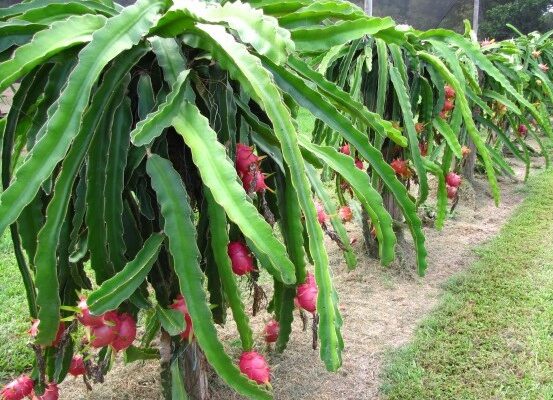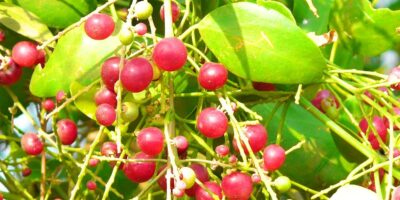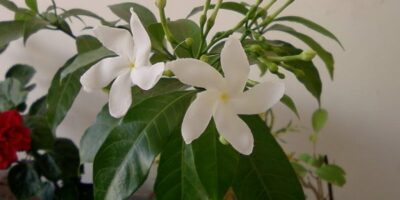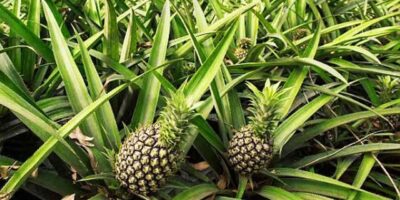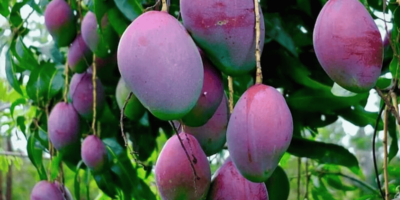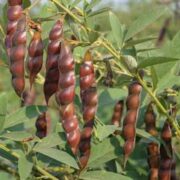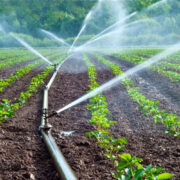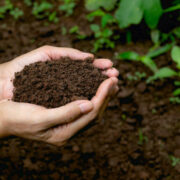Dragon Fruit Cultivation: The increasing popularity of dragon fruit, also known as pitaya or strawberry pear (Hylocereus spp. and Selenicereus spp.), belongs to family Cacataceae and it is well-founded due to its exceptional attributes and benefits. It has emerged as a “super crop” with worldwide recognition, transitioning from an ornamental plant to a highly sought-after fruit crop. Dragon fruit (Hylocereus undatus) is fast growing perennial climber having very beautiful fruits with bright red skin covered with scattered green scales and devoid of surface spines. Fruits are having red or white flesh with embedded black seeds. Initially cultivation of dragon fruit was started by the farmers from Karnataka, Maharashtra, Gujarat, Kerala, Tamil Nadu, Orissa, West Bengal, Andhra Pradesh, Telangana and Andaman & Nicobar Islands. Nowadays, its cultivation has extended to Rajasthan, Punjab, Haryana, Madhya Pradesh, Uttar Pradesh and North Eastern States.
Health and Medicinal Benefits
Dragon fruit is known for its health and medicinal benefits, primarily due to its rich content of antioxidants and dietary fibers. These components are believed to contribute to improved digestive health, enhanced immunity, and potential protection against certain chronic diseases.
Climate and soil
It can grow well in a diverse range of soils, but excess moisture should be avoided to prevent issues like root rot. The preferred soil conditions for dragon fruit cultivation include slightly acidic soil with a pH level between 5.5 and 6.0. Loamy soil, which is a mix of sand, silt, and clay particles, is often preferred due to its good drainage properties and nutrient retention.
Regarding the climate, the ideal conditions for commercial dragon fruit cultivation include an atmospheric temperature ranging from 20 to 30°C. This temperature range allows the plants to thrive and produce healthy fruits.
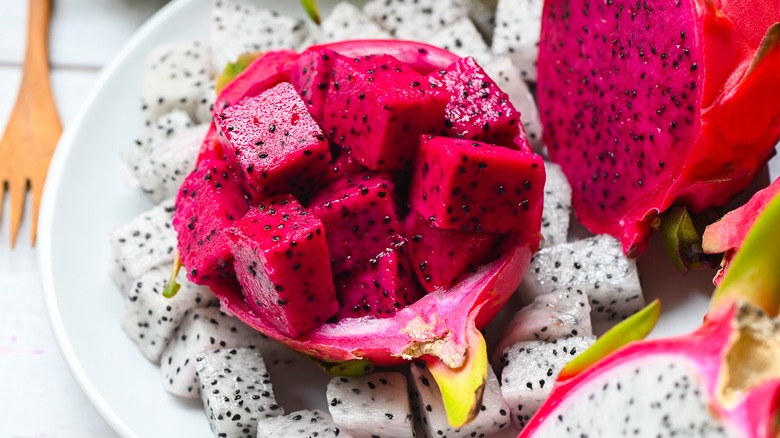
Dragon Fruit
Species
Selenicereus Undatus (pink skinned with white flesh)
Selenicereus Costaricensis (red skinned with red flesh)
Selenicereus Megalanthus (yellow skinned with white flesh)
The species differ in colour of course, but also in taste and size. For example, the Selenicereus Megalanthus is considered to be the sweetest variety among the fruits. In addition, the fruits with white flesh (Selenicereus Undatus) are often the largest (so more to enjoy), and also sweeter than the Selenicereus Costaricensis
Propagation
The dragon fruit is propagated through stem cuttings is widely practiced and remarkably simple. When selecting the cuttings, certain factors should be considered. It is essential to obtain them from healthy mother plants, ensuring they are free from pests and diseases. The cuttings can vary in size, ranging from 10 to 60 cm in length. In rain-fed plantations or degraded areas, it is advisable to use larger cuttings (exceeding 30 cm) to promote robust growth and survival under harsh conditions.
Planting
Dragon fruit cultivation thrives in full sunlight and requires an open area for planting. One common planting system is the single post system, where the plants are spaced at 3×3 meters apart. The vertical height of the pole is typically 1.5 to 2 meters, at which point the dragon fruit plants are allowed to branch and hang down. Planting the dragon fruit near the poles enables them to climb easily. The number of plants per pole can vary depending on the climatic conditions, typically ranging from 2 to 4 plants per pole. To maintain a balanced shrub, lateral shoots need to be limited, and 2-3 main stems are allowed to grow.
Farmers often use round metal or concrete frames to support the growing dragon fruit plants. Additionally, cost-effective structures made of iron poles with tires as the base structure have also been employed. In regions with high rainfall, concrete poles are used as trellises. The concrete pillars are supported by a square structure at the top to train the vines for bearing fruits. The preferred planting season for dragon fruit is during the summer monsoon, which typically occurs from June to August. Fruiting usually takes place from July to October, and there can be 6-8 flushes of fruiting during the season.
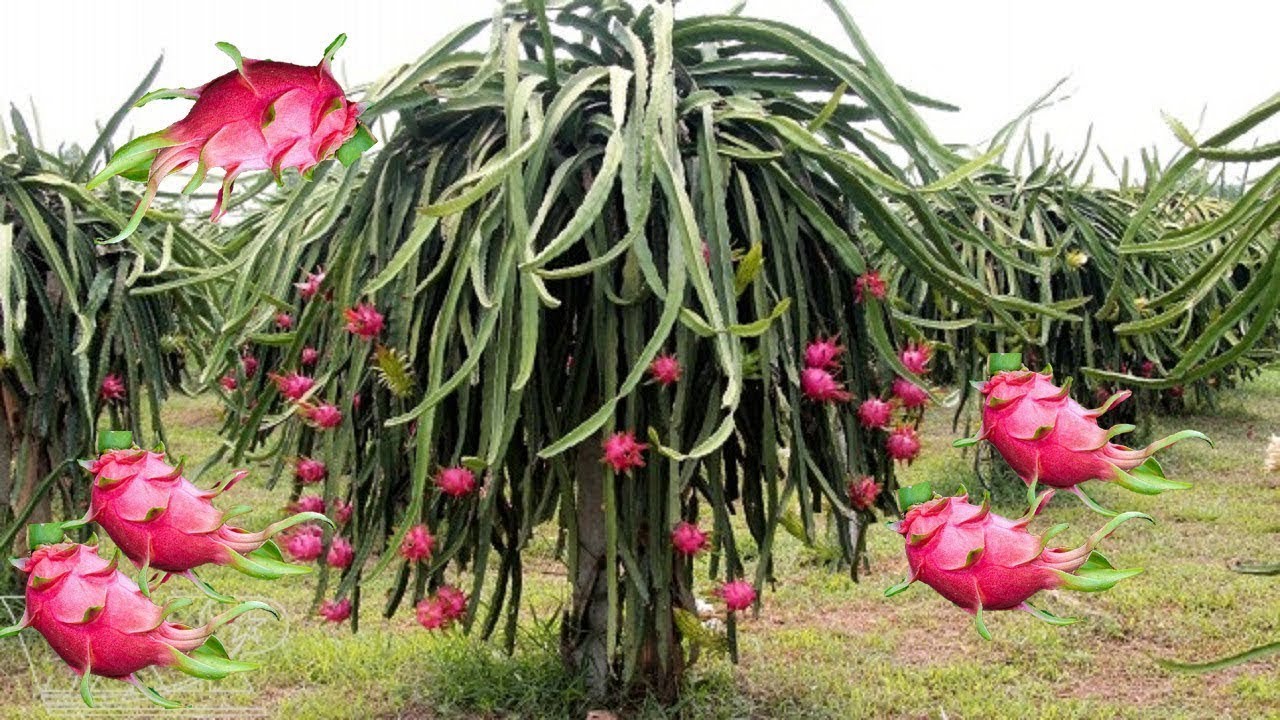
Dragon Fruit Cultivation
Training and Pruning
The Dragon fruit plants are known for their rapid growth, quickly developing thick and dense branches during the initial stage. To ensure proper growth, it is essential to prune the lateral buds and branches, encouraging them to grow towards the stands. Once the vines reach the top of the stands, the branches are allowed to grow freely. To promote lateral growth and create an umbrella-like structure of vines where flowers will bloom and develop into fruits, the tip of the main stem is removed. This stimulates the growth of new shoots, enabling them to climb around the ring of the trellis. This particular pruning technique is referred to as structural pruning, as it helps create a sturdy framework on the trellis. A well-cultivated vine can yield anywhere from 30 to 50 branches in a single year and possibly more than 100 branches within four years.
Also Read: Sucking Pests of Cotton: Management of sap sucking pests in cotton
Nutrient management
The root system of the Dragon fruit plant is shallow and superficial, enabling it to rapidly absorb even the smallest amount of nutrients from the soil. As a general guideline, during the time of dragon fruit plantation, it is essential to apply 10−15 kg of Farm Yard Manure (FYM) or organic manure, along with 100 g of Single Super Phosphate (SSP) per plant.
During the initial two years of growth, each plant requires approximately 300 g of nitrogen (N), 200 g of phosphorus (P), and 200 g of potassium (K) per year. Once the plant reaches maturity, it should be given 540 g of nitrogen (N), 720 g of phosphorus (P), and 300 g of potassium (K) in four equal split doses, with an interval of 3 months between each application.
Intercultural operation
Weed control plays a vital role in successful dragon fruit cultivation, and utilizing a weed mat can be highly effective in reducing weed growth while also assisting in soil moisture conservation. By preventing weeds from competing with the dragon fruit plants for resources, the weed mat helps ensure better plant growth and productivity.
Irrigation
The Dragon fruit plant exhibits exceptional water use efficiency, requiring significantly less water compared to C3 and C4 crops. It develops aerial roots from the sides of the stem, which serve to collect water from the surroundings and provide anchorage. Remarkably, Dragon fruit needs only about 10% of the water required by most other fruit crops like pear, citrus, and peach. For optimal growth, it is generally recommended to provide 120 to 150 mm of irrigation per year to meet its water requirements. To prevent issues like uneven watering and excessive moisture, micro-irrigation methods are highly recommended. This approach ensures precise and balanced watering, minimizing the risk of flower and early fruit drop.
Harvesting
Dragon fruit harvesting usually takes place from July to November, occurring in 6-7 flushes. The dragon fruit becomes fully mature 30-35 days after flowering. Harvesting the fruit is a simple process. By gently rotating the fruit in a clockwise direction and giving it a twist, one can easily detach the ripe fruit from the plant without causing significant damage. This method is gentle on the fruits and minimizes injuries during harvesting.
One of the advantages of cultivating dragon fruit is the flexibility in adjusting the harvesting time based on market demand. For the local market, the fruit can be harvested about three to four days after the skin changes from green to red or pink. However, if the purpose is for distant markets or export, the fruit can be harvested a day after the colour change, ensuring it reaches its destination in optimal condition.
Yield
On average, dragon fruit orchards can yield around 10 to 12 tonnes per hectare. However, in well-managed and commercially oriented orchards, the yield can significantly increase to 16-27 tonnes per hectare from the third year onward, particularly under favourable climatic conditions and appropriate management practices.
Also Read: Improved paddy varieties of AP: Improved varieties of paddy for sowing in delayed monsoon in AP

